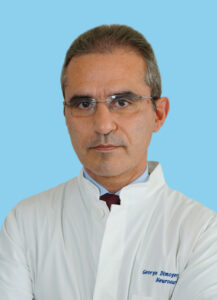Modern spine surgery is constantly evolving, offering minimally invasive and innovative solutions to treat diseases such as lumbar disc and vertebral instability.
Two of the most pioneering techniques They gain ground thanks to their efficacy and safety are transdermal microdiskectomy and TLIF spine with Flarehawk implants. Transdermal microdissectomy is a minimally invasive method that allows the discomfort to be decompressed in the case of discs, while TLIF spine with flarehawk ensures spine stabilization and drastically reduces the likelihood of recurrence, providing a long -term solution.
What is transdermal microdissectomy?
Transdermal microdissectomy is a minimally invasive method of removing the projected lumbar disc, which presses a nerve root and causes severe lumbar spine and lower extremities.
The technique is done through very small incision (2–3 cm), using tubular retractors and a surgical microscope for immediate and accurate visualization of the surgical field. In this way, the surgeon can remove the problematic part of the disk with minimal intervention in healthy tissues and parapronatic muscles, thereby reducing complications and post -operative pain.
The most important benefits of transdermal microdissectomy are:
- Anatomical approach via small section with obvious scars
- reduced bleeding
- short duration of intervention (about 40–50 minutes)
- Rapid postoperative mobilization of the patient
- Return to daily activity within a few days
- Reduced probability of nerve lesions
What is TLIF spine with flarehawk?
In cases where additional stabilization of the spine is required – especially after failed or repetitive discectomies – the tlif method (Transforaminal Lumbar Interbody Fusion) offers a reliable solution. This technique combines the removal of the damaged disc with the introduction of an arranged cage, known as Flarehawk, which can be ordered within the intervertebral space.
Flarehawk is an innovative, multi -dimensional implantable device with a low profile (7–9 mm) when importing it, but then claims to achieve maximum contact with surfaces (final plates) of the vertebrae. Through its shear extension, the implant allows for the restoration of normal lordosis and the restructuring of the intervertebral space, reducing the risk of subsidence and providing an increased surface for bone graft aggregation with adjacent vertebrae.
Using Flarehawk with TLIF technique offers additional advantages, such as:
- Minimizes the need for extensive decompression of the nerve elements.
- It facilitates the introduction of the implant through the limited surgical field.
- It allows the patient to be rapidly rehabilitated.
The design of this implant allows for the simultaneous insertion of bone graft to promote bone fusion, which has proven to be important for the success of the spine. Finally, it appears that this implant practically eliminates the possibility of recurrence of discipline after disc.
What are the clinical effects and benefits of the two techniques?
Clinical studies published show that both techniques offer positive results, both at the level of pain relief and at the level of functional rehabilitation. Specifically, transdermal microdissectomy leads to immediate relief from severe pain, while the TLIF technique with flarehawk has shown excellent results in achieving bone compound and the restoration of normal spine anatomy.
The advantages associated with these minimally invasive techniques include:
- Minimum surgery and minimum blood loss.
- Minimizing the time of intervention and hospitalization time.
- Immediate mobilization and return to everyday life.
- Minimization of direct and distant (discus recurrence, scoliosis, etc.) post -operative complications and optimization of imaging results.
Inference
The modern methods of transdermal microdissectomy and TLIF vertebrae with the use of the Flarehawk’s ordered cage represent a new era in spine surgery. They provide patients with the opportunity for effective pain relief, while maintaining a higher functional quality of life while reducing recovery and recovery times.
At a time when patients are demanding faster, safer and more effective treatments, the application of the aforementioned methods highlights the dynamics of modern medicine to change the treatment of vertebral diseases with truly impressive results.

Dr writes Demogeros GeorgiosMD, MSc, PhD, Director of Neurosurgeon-Spine Surgeon
Peristeri medical
Read more articles on issues related to your health, here
